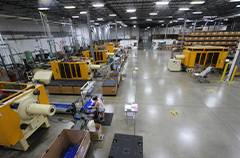Here are some fun facts regarding the global plastic injection molding market:
- $360.6 billion in 2019
- Forecasted to expand to $498.98 billion by 2027
Now let’s “inject” some common sense as to the reasons this market is growing so rapidly!
1. Wide Spectrum of Custom Plastic Resins
Some manufacturers may think only in terms of methods and processes when they think about injection molding technology, but this can be misleading. New plastic polymers are continuously being developed that can improve plastic material properties. These days, selecting the perfect resin out of hundreds of candidates is just as critical as the manufacturing process itself.
Here are just a few properties plastic injection molders have to consider when selecting the correct polymer for the job:
- Density
- Tensile/compression strength
- Corrosion resistance
- Thermal/electrical resistivity
- Surface finish
- Color
In many cases, outside experts can advise you on which injection molding materials are best for your product, so be sure to consult an expert before choosing what your part will be made from.
2. Structural Foam Molding
Many plastic products must have a high strength but low density in order to achieve the lightest weight. When this is the case, structural foam molding is called for. Structural foam molding is a process that adds an inert (noble) gas at the same time the molten resin is pushed into the mold at a relatively low pressure The added gas helps reduce density while facilitating the lower injection pressure. Lower pressure allows the molding equipment to operate more efficiently. Tooling is easier as well, and the reduced equipment wear-and-tear allows for more parts to be produced in the same amount of time.
3. Gas-Assisted Injection Molding
Plastic parts that are designed to contain a given fluid or gas often need a thick wall, which can be a challenge to mold effectively. Thick walls don’t cool evenly, which can cause the plastic to warp and lose both its functional and aesthetic properties.
That’s where gas-assisted injection molding comes in. To prevent warpage, a pressurized gas is pumped into the mold cavity, pressing against the surface and holding it in place. By adding gas-pressure into the mold, gas-assisted injection molding makes possible uniform thick-walled products and lowers surface finish costs in the process.
4. Thin-Wall Molding
Thick-walled products are the answer for high-pressure products, but other parts require a thin wall to do their job. Thin-wall molding is used to create many products like simple medical equipment, tubing and other non-complicated enclosures. However, thin-walled tubing does have its issues. The minimal thickness can lead to surface cracks if the mold doesn’t cool uniformly, which can result in malformations and even leaks.
Injection Molding: Expanding To Fill Every Niche
These are just a few of the most common injection molding technologies, and many others are under development.
In fact, some molten metals can now be injection-molded. Despite their higher cost, they are useful in industries such as aerospace. Silicone injection molding is also an option in many instances.
Innovation is driving the explosive growth in plastic injection molding. With its myriad of processes and materials, this exciting industry is poised to expand even further in the years ahead.
